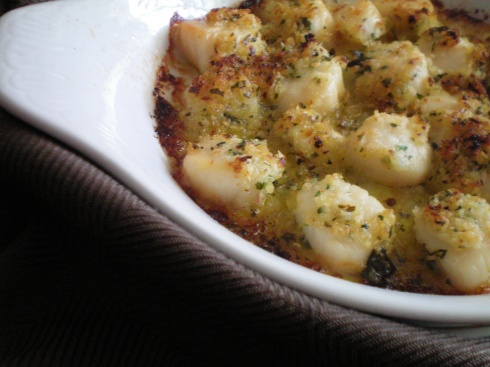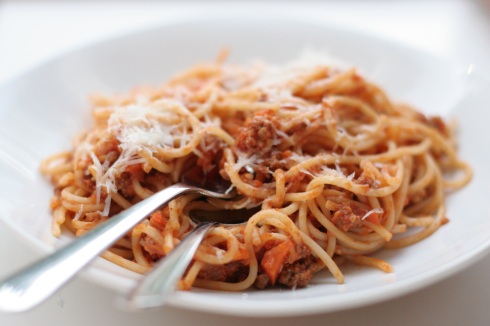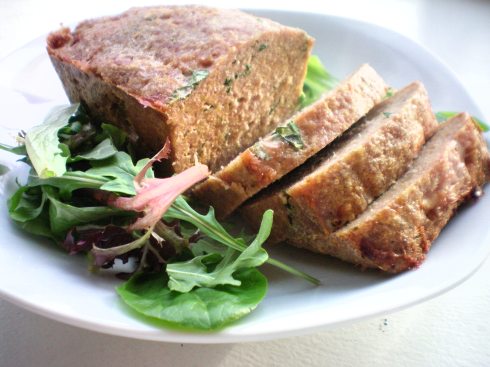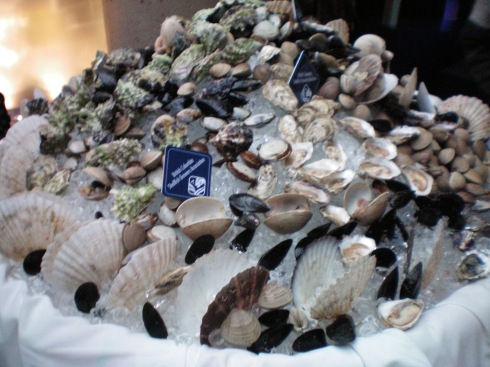 Unlike most Vancouver food bloggers, my blog is focused on home cooking. And the more I cook at home–which is more and more over the last couple of years–the less I eat at restaurants. Now don’t get me wrong, I love eating at restaurants. Good restaurants, that is. What I hate is paying for a meal, thinking, “I could have done better”. Which is why when I go out to eat, I tend to gravitate to restaurants that serve classic French cuisine, particularly of the rustic country variety.
Unlike most Vancouver food bloggers, my blog is focused on home cooking. And the more I cook at home–which is more and more over the last couple of years–the less I eat at restaurants. Now don’t get me wrong, I love eating at restaurants. Good restaurants, that is. What I hate is paying for a meal, thinking, “I could have done better”. Which is why when I go out to eat, I tend to gravitate to restaurants that serve classic French cuisine, particularly of the rustic country variety.
So when Kim of I’m Only Here for the Food and Sherman from Sherman’s Food Adventures invited me along to Bistro Bistro in an early celebration of Easter, I rearranged my schedule so I could make it. I had dined at this little Kitsilano eatery on my birthday and really enjoyed my meal and the atmosphere. One bite of their superbly cooked lamb and I decided that, along with Les Faux Bourgeois, it was going to be one of my favorite restaurants.
We arrived shortly after opening and were joined by Mijune from the blog Follow Me Foodie. This is a restaurant that quickly gets packed, so our early arrival ensured our pick of tables. Of course, we ended up choosing one right by the window, which allowed in the maximum of sunlight.
We started with the tapenade and French baguette, which was served on a cutting board for that rustic, country touch. The bread was better than much of the bread served at restaurants, with a crispy, flaky crust and a soft, chewy interior that was fluffy at the same time. It was a very light baguette. I’d had the tapenade at Bistro Bistro before and it was wonderful. This time it was very bland, seriously undersalted, which was a disappointment.

 Due to my recent dietary restrictions, I decided to assemble a meal out of several appetizers and ordered the escargots, mussels and pomme frites. For six dollars, roughly what you would pay for six or seven escargots at a Greek taverna, I got a nice little plate piled with escargots and a delicious side of lightly dressed greens that complemented the snails nicely. Although the presentation was unique and attractive, I also found the escargots bland. I felt they could have used a bit more of everything. More garlic, more butter, more salt. I’m the first to admit that I have a bit of a salt fetish and often find dishes underseasoned (see my post on La Brasserie) but my fellow bloggers agreed with me.
Due to my recent dietary restrictions, I decided to assemble a meal out of several appetizers and ordered the escargots, mussels and pomme frites. For six dollars, roughly what you would pay for six or seven escargots at a Greek taverna, I got a nice little plate piled with escargots and a delicious side of lightly dressed greens that complemented the snails nicely. Although the presentation was unique and attractive, I also found the escargots bland. I felt they could have used a bit more of everything. More garlic, more butter, more salt. I’m the first to admit that I have a bit of a salt fetish and often find dishes underseasoned (see my post on La Brasserie) but my fellow bloggers agreed with me.
 The mussels were served in a classic broth of white wine, shallots, and parsley. Although the broth was flavorful, it had a bitter, astringent aftertaste, which seemed to indicate that the wine was not properly cooked off.
The mussels were served in a classic broth of white wine, shallots, and parsley. Although the broth was flavorful, it had a bitter, astringent aftertaste, which seemed to indicate that the wine was not properly cooked off.
 At this point I will digress a bit and mention that one thing I enjoy about Bistrot Bistro is the way the food is served. Everything comes in little casserole style dishes or Dutch ovens, or in the case of the mussels and frites, little metal buckets. I think little touches like these go far to elevate the dining experience. In addition, both times I have gone to Bistrot Bistro, the service has been wonderful. Very attentive but not fawning in a way that one often finds annoying.
At this point I will digress a bit and mention that one thing I enjoy about Bistrot Bistro is the way the food is served. Everything comes in little casserole style dishes or Dutch ovens, or in the case of the mussels and frites, little metal buckets. I think little touches like these go far to elevate the dining experience. In addition, both times I have gone to Bistrot Bistro, the service has been wonderful. Very attentive but not fawning in a way that one often finds annoying.
 The Pommes Alumette Mayo were of the shoestring style. Although I personally prefer a thicker fry, these were near perfect, with a hot, salted exterior and a fluffy, mealy interior that was not thin on taste.
The Pommes Alumette Mayo were of the shoestring style. Although I personally prefer a thicker fry, these were near perfect, with a hot, salted exterior and a fluffy, mealy interior that was not thin on taste.
I also had a chance to try some of my companions’ dishes. For a broader analysis of their meals, please refer to their websites by clicking on the links above. At this point, I want to mention the rabbit, which we all agreed was the highlight of the evening. Rabbit is not something I eat often, as in the past the rabbit I have eaten has been stringy and not well prepared. The rabbit at Bistrot Bistro was excellent. It was moist and perfectly cooked, served in a white wine cream sauce. The sauce was light and full of flavor, perfectly balanced. My mind raced, already devising a way of cooking such a sauce at home. The next time I go to Bistrot Bistro, I am definitely ordering the rabbit.
 For dessert, I had the lemon tart, one my standbys at French restaurants. It did not disappoint. It had a creamy, tart interior, which I really enjoyed since I don’t like desserts that are overly sweet. It was served with a berry compote and a dollop of whip cream.
For dessert, I had the lemon tart, one my standbys at French restaurants. It did not disappoint. It had a creamy, tart interior, which I really enjoyed since I don’t like desserts that are overly sweet. It was served with a berry compote and a dollop of whip cream.
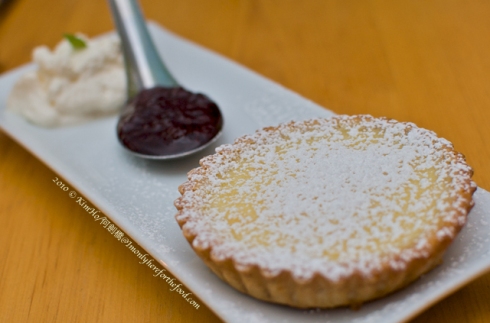 I also tried the chocolate mousse, which was light and airy with a deep chocolate flavor. I wasn’t supposed to be eating mousse (the eggs, the milk) but couldn’t seem to stop dipping my spoon into it. So much for dietary restrictions.
I also tried the chocolate mousse, which was light and airy with a deep chocolate flavor. I wasn’t supposed to be eating mousse (the eggs, the milk) but couldn’t seem to stop dipping my spoon into it. So much for dietary restrictions.
 Overall, I enjoyed my meal at Bistrot Bistro and will go there again. Although sides are extra, the portions are substantial. The dishes were generally well executed and a great value for the price. It’s not easy to find such quality dishes at such a price point. The attentive service and bright, splashy atmosphere are also big pluses.
Overall, I enjoyed my meal at Bistrot Bistro and will go there again. Although sides are extra, the portions are substantial. The dishes were generally well executed and a great value for the price. It’s not easy to find such quality dishes at such a price point. The attentive service and bright, splashy atmosphere are also big pluses.
Bistro Bistro
1961 West 4th Avenue
Vancouver, BC
V6J 1M7
(604) 732-0004
Thank you to Kim-Kiu Ho from I’m Only Here for the Food and Sherman Chan from Sherman’s Food Adventures for providing the photography. Salut!




